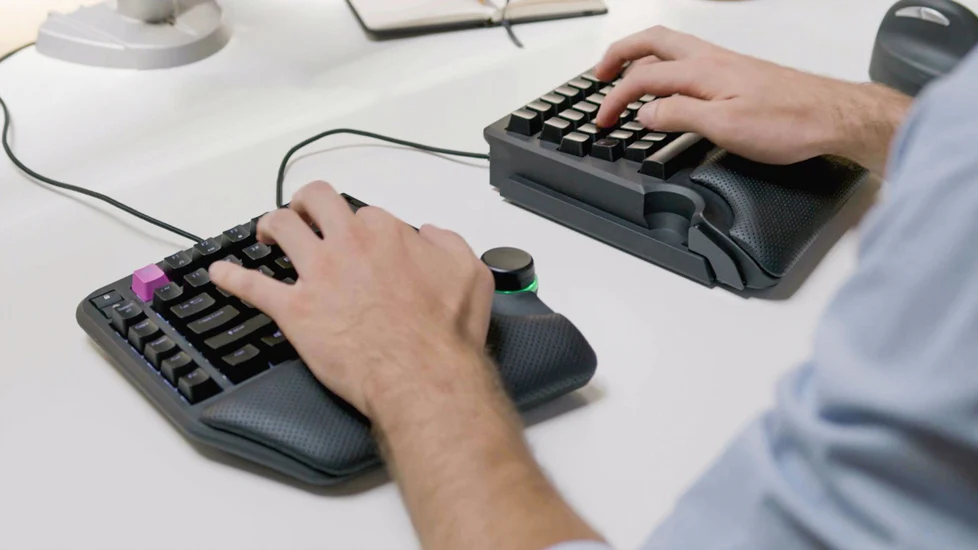The Split-V keyboard‘s innovative design ventures into uncharted territory, breaking away from conventional keyboard layouts in pursuit of improved ergonomics, a notable achievement for producers.
In this review, we’ll explore the pros and cons of this bold approach to keyboard design and help you determine whether it’s the right choice for you.
The Split-V keyboard’s heart is its commitment to ergonomic excellence. By splitting the keyboard into two halves and angling them outward, it aims to alleviate the strain and discomfort associated with traditional keyboards.
The Split-V Keyboard’s ergonomic design particularly appeals to users susceptible to repetitive strain injuries (RSI) or carpal tunnel syndrome. It promises a more natural hand and wrist posture during extended typing sessions.
Read also: A closer Look at Lenovo’s transparent display Laptop
Some Split-V keyboards offer tenting options, allowing users further to tailor the keyboard’s angle for optimal comfort. Additionally, models equipped with mechanical switches provide satisfying keystrokes and tactile feedback, enhancing the overall typing experience.
The learning curve of Split-V keyboard adoption
The split layout presents a significant challenge for traditional touch typists. Adapting to the new vital positions requires retraining muscle memory, resulting in a potentially steep learning curve and initially decreased typing speed. This adjustment period may deter users accustomed to the efficiency of touch typing.
Regarding aesthetics and practicality, Split-V keyboards may not appeal to everyone. The separated design occupies more desk space than traditional keyboards, potentially contributing to clutter. While some models offer wireless connectivity, wired alternatives may introduce additional cables, further complicating the setup.
It’s essential to recognise that Split-V keyboards cater to a specific audience with distinct ergonomic priorities. Availability may be limited compared to mainstream keyboards, and the price point can be higher, reflecting the specialised nature of these ergonomic solutions.
Who should consider a Split-V keyboard?
If you feel pain or strain while working, especially if it’s because of RSI or carpal tunnel syndrome, you might want to think about getting a Split-V keyboard.
In addition, people who value ergonomics over standard layout rules and types for extended periods may significantly benefit from ergonomic design.
Before buying, try a Split-V keyboard to see how comfortable it is and how well it works with your computer. You can feel better by looking for stores with test models or easy return policies.
You should also expect to put in time and effort to get used to the new look, as the process may take some time.
Read also: Microsoft’s Copilot improves productivity of office 365
Alternatives to the Split-V keyboard
Alternative options exist for ergonomic improvements without fully committing to a split layout. Curved ergonomic keyboards or models with integrated palm rests offer ergonomic benefits without the drastic layout change.
Additionally, mechanical keyboards with softer keystrokes can help alleviate typing strain for users seeking a more traditional typing experience.
Ultimately, investing in a Split-V keyboard hinges on individual needs and preferences. While it offers significant potential for ergonomic enhancement, its suitability depends on the user’s willingness to adapt to the unique layout.
For individuals experiencing typing discomfort or prioritising ergonomic wellness, the benefits of a Split-V keyboard may outweigh the initial learning curve, making it a worthwhile investment in long-term comfort and productivity.














